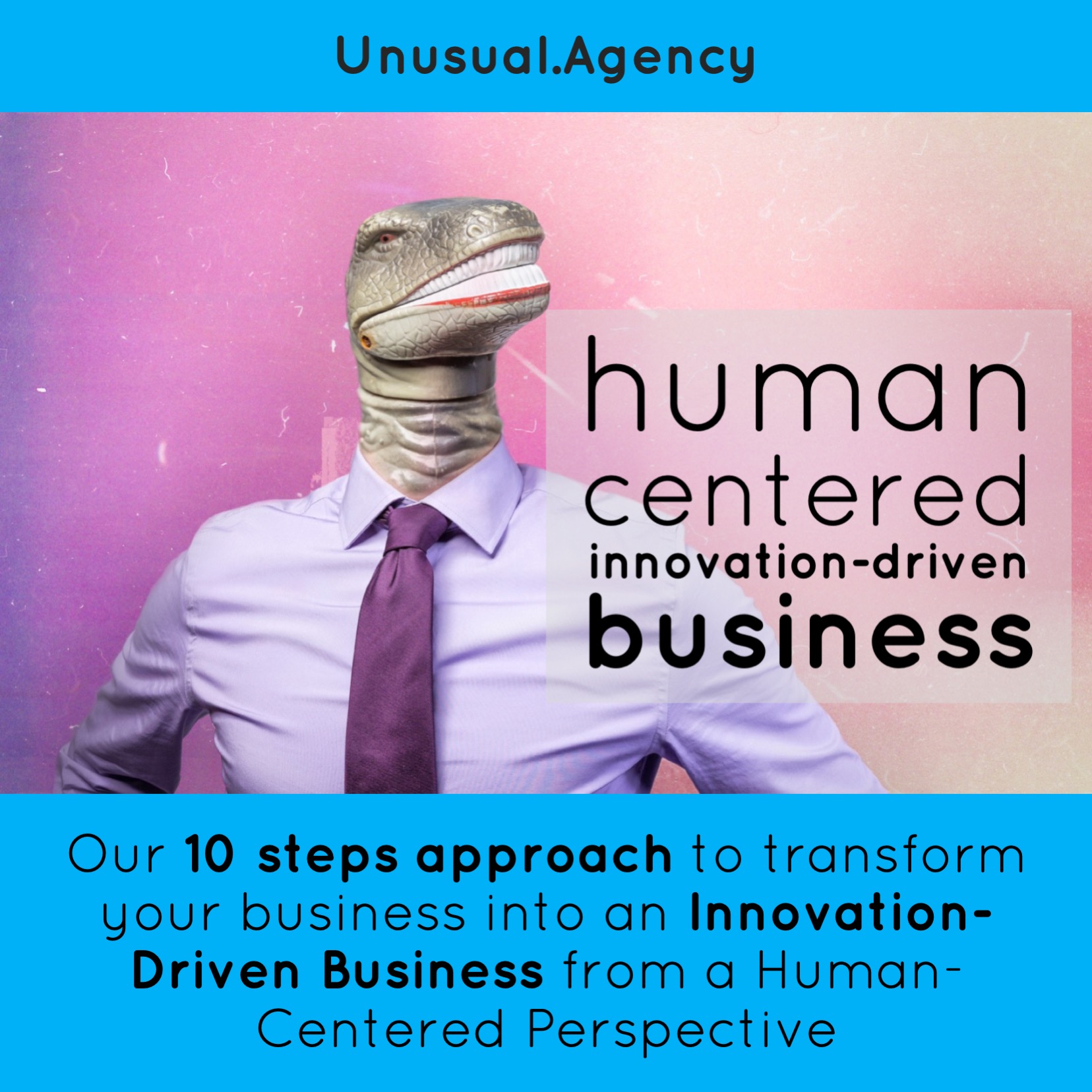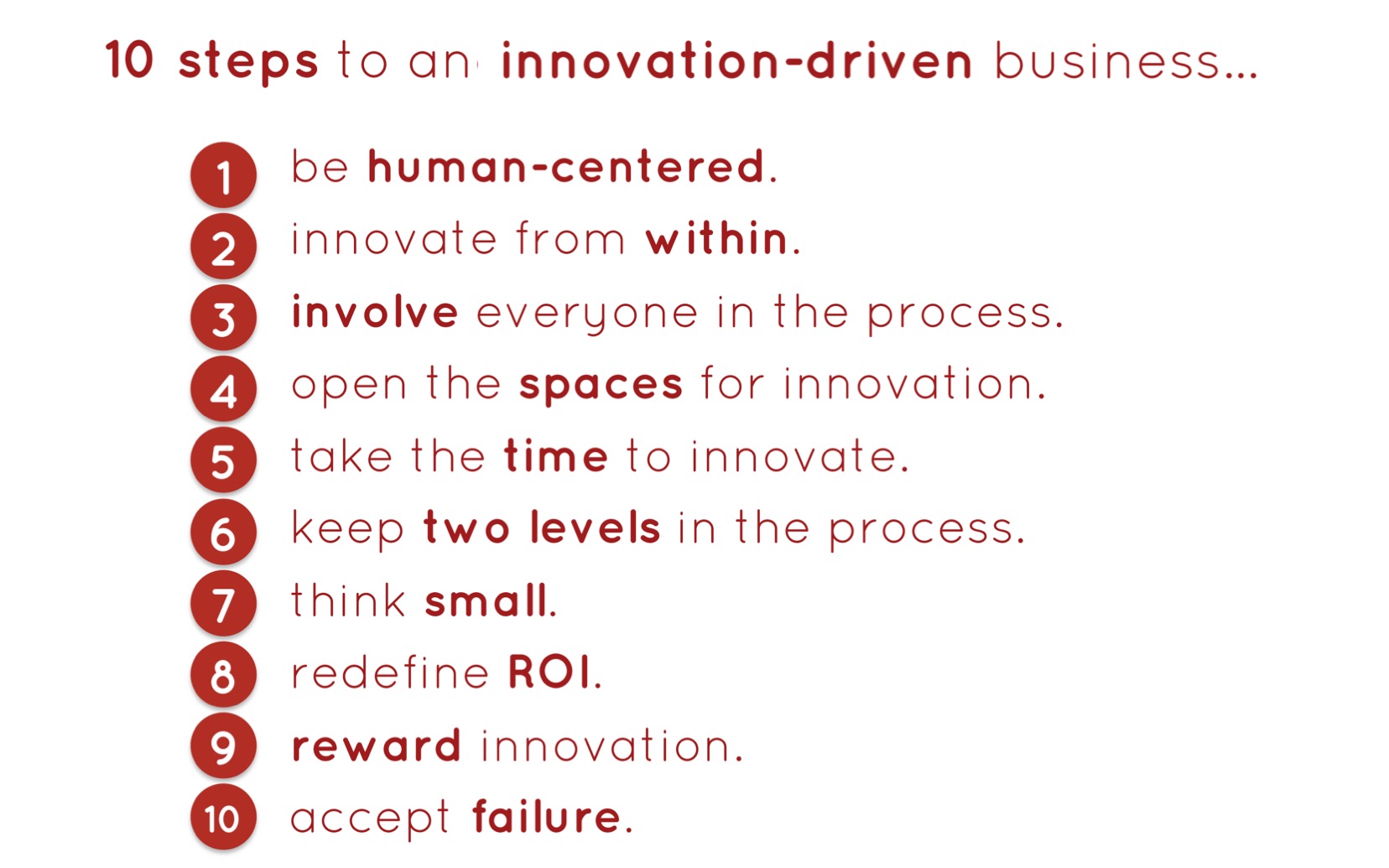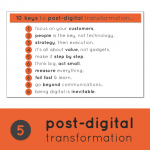
Full transformation of companies into Exponential Organizations using our 10 STEPS approach to a Human-Centered Innovation-Driven Business Transformation, involving human resources, innovation, marketing, sales, products, operations, business model, and general direction. Includes structural transformation, digital transformation, trainings and continuous coaching on trends and innovation/ideation techniques/methodologies, including the usage of our proprietary methodologies GAP & BRIDGES™, THE WHEEL™, and BEHAVIORAL TRENDS™.
Transform your whole company into an Innovation-Driven organization. Lead on what’s next for the full company, based on market trends and top-of-the-line business tools and methodologies.
Innovation means change, and change is the only constant. Dare to reinvent your business, embrace innovation in an ever-changing world. Get your human eyes, inspire your teams, learn the new trends leading your industry, ideate new ways to create value for your customers, transform your whole organization into an Innovation-Driven Business.
|
1. Be Human-Centered.In an ever-changing environment, you should pivot from what really matters: your markets, their needs, and how to create value for them. |
2. Innovate from within.Do not outsource innovation. Ask for help, but do it from within, with your own resources, people and processes. Own your future, dare to change your internal structure and challenge your statu quo. |
3. Involve everyone in the process.Because you don’t know who will have the next great idea for your company. Involve your employees at all levels and let them know they are part of the future of your company. |
4. Open the spaces for innovation.Whether it’s through contests, challenges, workshops, platforms, or innovation sessions, you need to open the spaces in your company so people can demonstrate their creativity and add value to your company. |
5. Take the time to innovate.Google is famous for their 70/20/10 human resources approach. That means people is paid the 70% of their salary for what they were hired for; 20% of their salary for innovation projects; and 10% of their salary for their own personal development. If you pay 20% of their salary for innovation, that means your people is obliged to innovate for you: you are paying them for that! |
6. Keep two levels in the process.General direction is good at establishing the innovation challenges, but they shouldn’t play the innovation game. Leave that to your employees, empower them to bring you great ideas & solutions for your challenges. While the directors are the sharks, the employees shoud play the divers that bring fresh fish to their mouths. |
7. Think small.Innovations is a trial & error game. It shouldn’t be expensive. Develop Minimun Viable Products (MVPs). Pilot your projects in small scale, and grow them only when proven successful. |
8. Redefine ROI.In these new times, ROI doesn’t stand anymore for Return On Investment. Redefine the expected ROI of your innovations projects to RETURN ON INFORMATION. That is, gather all the data, measure, measure, measure, and learn everything you can. |
9. Reward Innovation.If you really want your employees to be part of the future success of your company, you should share your success with them. It’s not only a motivational thing: the government prints these green rectangles of paper that are great at motivating employees. |
10. Accept failure.9 out of 10 projects fail, and you should embrace that gladfully. As Google says (and we complete): fail fast (and cheap) and carry on (with all the learnings you can). Remove fear of failure from your thoughts and your employees. The real failure is not that of an innovation initiative that didn’t work, but that of a company that failed to embrace failure. |










